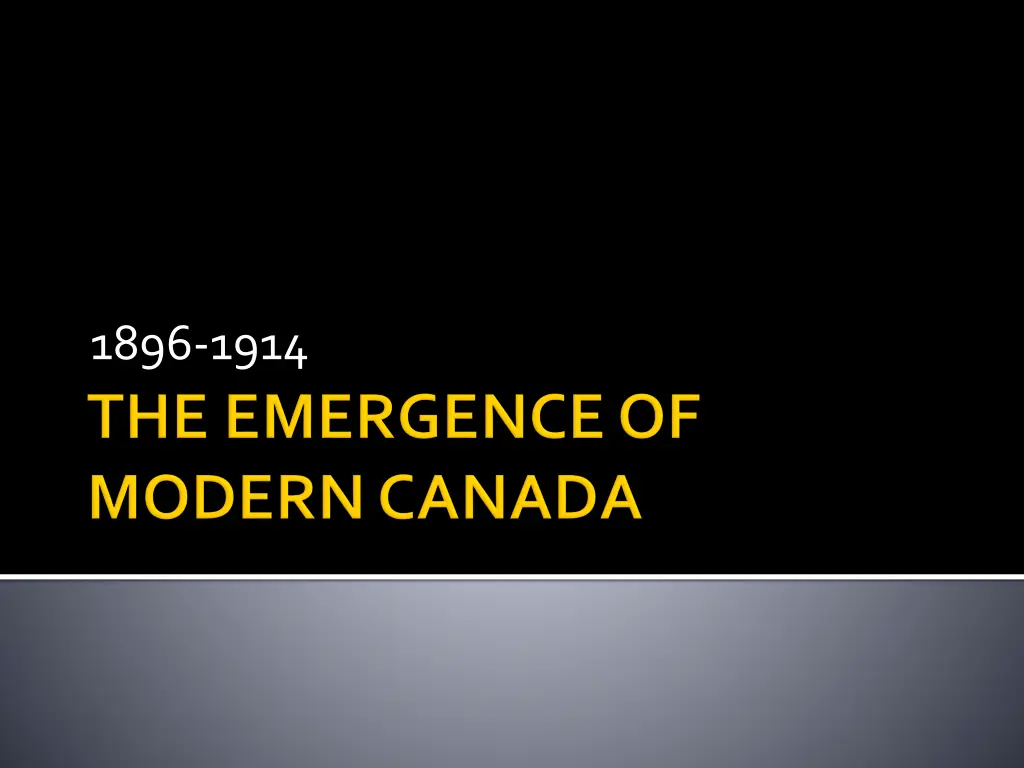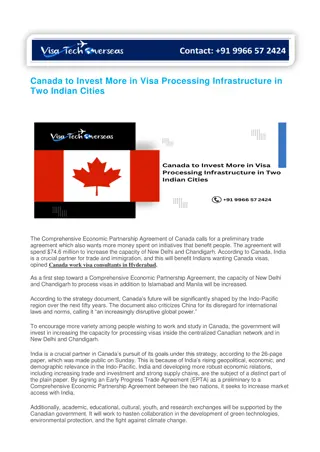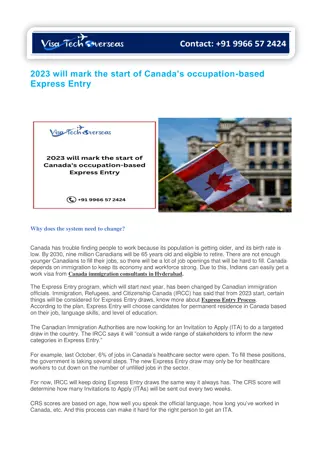
Canadian Immigration Policy Overview
Explore the history of Canadian immigration policy from 1896 to 1914, focusing on the push and pull factors that drove immigrants to Canada, the initiatives by the Minister of the Interior to encourage settlers in the West, challenges faced by newcomers, successes and failures of different immigrant groups, and the impact on Canadian society.
Download Presentation

Please find below an Image/Link to download the presentation.
The content on the website is provided AS IS for your information and personal use only. It may not be sold, licensed, or shared on other websites without obtaining consent from the author. If you encounter any issues during the download, it is possible that the publisher has removed the file from their server.
You are allowed to download the files provided on this website for personal or commercial use, subject to the condition that they are used lawfully. All files are the property of their respective owners.
The content on the website is provided AS IS for your information and personal use only. It may not be sold, licensed, or shared on other websites without obtaining consent from the author.
E N D
Presentation Transcript
1st ____________ _______________ _______________ _______________ _______________ is an important goal of the Canadian government
PUSH PULL Overpopulation in homeland Crop failures Starvation Lack of land Poverty Persecution of religious beliefs Political restrictions Rigid social system Improved quality of life Free farmland Rising grain prices Jobs Resources (timber, fish, mining, gold)
Promise of ___________ _____________________ _____________________ ___________________, Minister of the Interior, was in charge of encouraging settlers in the West _____________ policy
Sifton encouraged white _____________ and white ___________ to settle the lands Immigrants from central and eastern Europe were in demand for their knowledge of ________ ____________________ ____________________
Many Canadians were uncomfortable with the new immigrants because many of them did not speak __________ and had different ___________, ___________, and _________________
Land was mapped out in townships (blocks) Needed to raise $500 to buy a plough, wagon, horse, and a milk cow Living conditions were primitive Houses were called soddies because they were built with a wood frame and mud-covered sod; windows were covered with sacks and had a thatched roof Houses were full of flies and fleas, smelled, and leaked Cold winter, monotonous diet, drought, and grasshoppers
SUCCESSES FAILURES ___________ were the most successful: assimilated into Canadian culture, had farming experience, had more money ___________ immigrants were the least successful: they didn t have the farming experience Some ________________ were used as cheap labour and suffered abuse and unbearable living conditions Some ________________ were adopted into new families
Workers disliked the fact that immigrants accepted ___________ and poor working conditions, as well as _________ pay ___________ Canada feared an influx of new cultures would change the British character of the country ___________ Canada feared their culture wouldn t last or be recognized as unique
In 1905, ______________ became the new Minister of the Interior New immigration policy: restricted non-White immigrants from _________, _________, and _________ Limited ________, ________ ____________, and ___________ immigrants
In 1885, the first head tax was imposed on Chinese immigrants at a cost of $______ This tax eventually rose to $_______ By 1923, the tax was replaced with ______________ on all Chinese immigration
In 1906, the Immigration Act was changed: all immigrants from Asia were now required to come to Canada by ______________ ________________






















